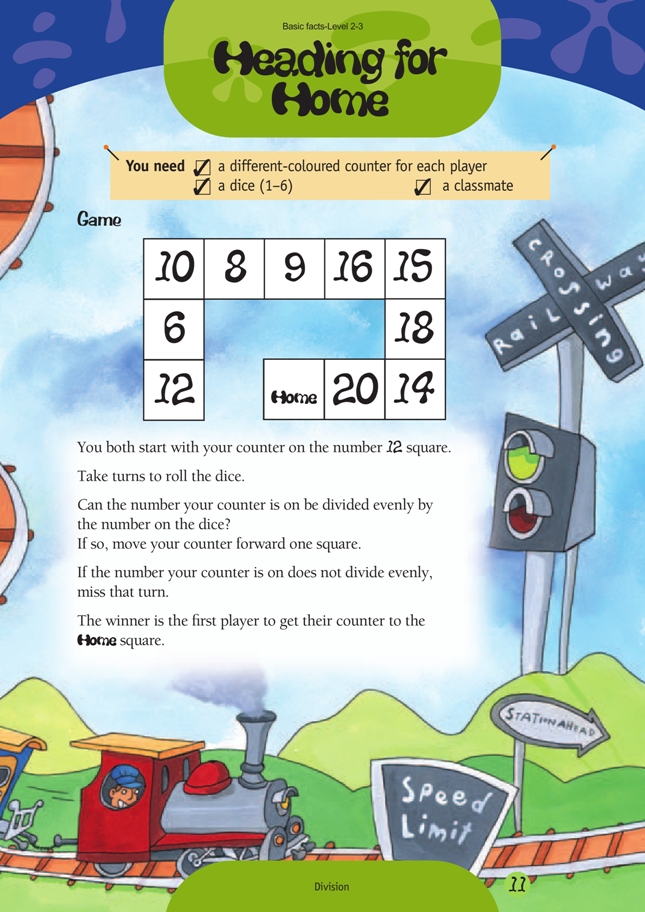This is a level 3 number activity from the Figure It Out series. It relates to Stage 6 of the Number Framework.
A PDF of the student activity is included.
Click on the image to enlarge it. Click again to close. Download PDF (216 KB)
know division facts
FIO, Level 2-3, Basic Facts, Heading for Home, page 11
a dice (1-6)
a classmate
This game provides students with experience in simple division. It is interesting to see what the board numbers are exactly divisible by, that is, what they can be divided by to leave no remainder.
Students will realise from playing the game that some numbers are easier to move off than others. For example, 14 is troublesome as only dice throws of one and two will result in a move. Twelve, by contrast, has many factors, so throws of one, two, three, four, and six will result in a move.
Students enjoy creating their own board for this game. Remind students to choose the numbers carefully so that players do not become frustrated by a lack of moves.
To investigate prime numbers, put 11 and 17 on a board. Students will find that only a throw of one will result in a move. This is because prime numbers have only two factors, themselves and one. Note the connection between this and the number of rectangular arrays that can be made from a prime number of square tiles. With 11 tiles, only a 1 x 11 array is possible:
Answers to Activity
A game of division
